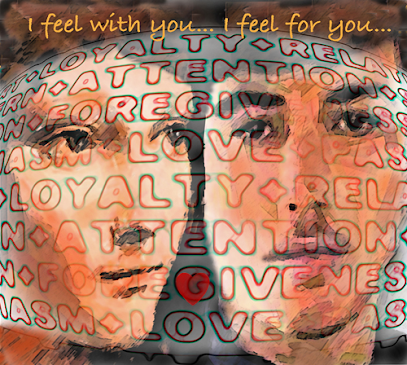Beyond the Rainbow
Despite my curiosity, I never asked my family about the poster. Instead, I simply stared at it in awe during every visit. It wasn’t until I was a graduate student that I discovered Ntozake Shange’s choreopoem, “for colored girls who have considered suicide/when the rainbow is enuf.” Reading it was transformative. Shange’s work is a song for Black girls, helping us see and know ourselves. It illuminated the complexities of living at the intersection of race and gender, and helped me understand my own life as a Black lesbian woman. For the first time, I thought deeply about how my identity connected me to those who came before and those who would come after.
Shange’s metaphor of the rainbow as a symbol for the layered experiences of Black women resonated with me. It illustrated the struggles and resilience of Black women facing both racial and gendered oppression, within and outside their own communities. The rainbow’s symbolism also connects to the LGBTQ+ community. I remember being drawn to a tiny rainbow sticker in Ann Arbor’s gayborhood, which led me to an LGBTQ+ bookstore. There, I learned about the rainbow flag, created in 1978 by Gilbert Baker at the request of Harvey Milk, to represent the diversity and pride of LGBTQ+ people. Each color stood for a different aspect of our community, aiming to spread love and inclusivity.
However, not everyone felt included by the rainbow flag. For many Black and Brown queer and trans people, the flag sometimes represented exclusion and even terror, rather than solidarity. This was evident in the experiences of activists like Sylvia Rivera and Marsha P. Johnson, who, despite their pivotal roles in LGBTQ+ history, faced racism and marginalization from within the community. Their activism for trans and street youth, and their efforts to create safe spaces, often went unrecognized by mainstream LGBTQ+ groups.
The issue of inclusion resurfaced in 2017, when Philadelphia’s Office of LGBT Affairs added black and brown stripes to the Pride flag to highlight the need to confront racism and transphobia within the community. While many people of color saw this as a positive step, some white LGBTQ+ individuals felt the change was unfair, sparking heated debates. Reports and studies, like those from Stonewall in the UK, have shown that racism and discrimination remain significant problems within LGBTQ+ spaces, with many Black and Brown members feeling excluded by the very symbol meant to unite.
Coming out and finding my place in the LGBTQ+ community made me realize that, like Black communities, queer spaces are not monolithic. There are layers of privilege and exclusion, and not everyone experiences the rainbow in the same way. This understanding has led me to question my own relationship with the flag and to appreciate the nuanced symbolism Shange offered. True solidarity in LGBTQ+ communities requires recognizing and addressing these differences, ensuring that all voices—especially those of Black and Brown queer and trans people—are seen and heard.
WORDS TO BE NOTED-
-
Choreopoem
Meaning: A form of dramatic expression that combines poetry, dance, music, and song, coined by Ntozake Shange for her work "for colored girls who have considered suicide/when the rainbow is enuf." -
Resonated
Meaning: To have a deep, meaningful, or lasting effect; to evoke a feeling of shared emotion or belief. -
Marginalization
Meaning: The process of making a group or individual feel isolated, unimportant, or powerless within a society or community. -
Solidarity
Meaning: Unity or agreement of feeling or action among individuals with a common interest; mutual support within a group. -
Intersection
Meaning: The point at which different aspects of identity (such as race, gender, sexuality) overlap and interact, often creating unique experiences of discrimination or privilege. -
Nuanced
Meaning: Characterized by subtle differences or distinctions; showing complexity and depth in understanding or expression.
PARA SUMMARY-
When I was young, I loved visiting my aunt and uncle’s house, especially to look at their Black art. One special poster made me curious about why it showed a sad Black woman and talked about suicide. Later, as an adult, I learned it was from a famous play by Ntozake Shange, which helped me understand the struggles of Black women, especially those who are also LGBTQ+. I realized that even in LGBTQ+ spaces, racism and exclusion exist, and not everyone feels included by the rainbow flag. True unity means listening to and respecting everyone’s different experiences.
SOURCE- YES MAGAZINE
WORDS COUNT - 550
FLESCH-KINCAID - 14.7




Comments
Post a Comment